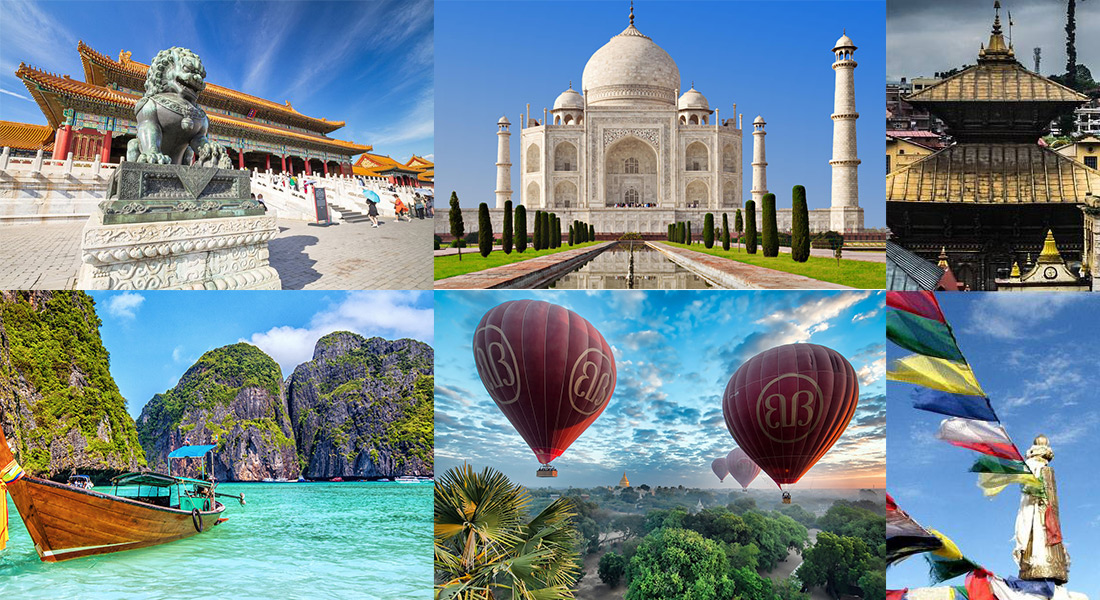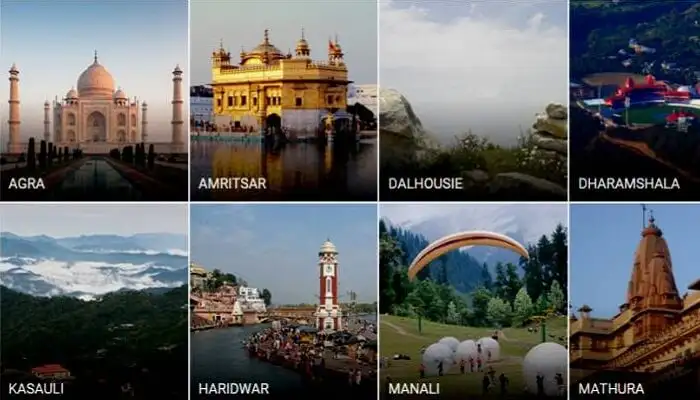Thailand is renowned for its stunning temples, from the golden spires of Wat Arun to the sacred Wat Phra That Doi Suthep. Yet, beyond these famous landmarks lie hidden temples that offer serenity, history, and authentic Thai culture without the crowds. Tucked in remote jungles, coastal villages, and quiet towns, these lesser-known gems showcase Thailand’s spiritual depth and architectural beauty. This beginner-friendly guide explores Thailand’s hidden temples, detailing their stories, how to visit, cultural tips, and nearby attractions. Perfect for travelers seeking off-the-beaten-path experiences, it simplifies discovering Thailand’s sacred treasures.
Why Visit Thailand’s Hidden Temples?
Hidden temples provide a tranquil escape from tourist hotspots, offering a deeper connection to Thai Buddhism and local traditions. Often older and less restored, they reveal Thailand’s historical and artistic heritage through intricate murals, ancient statues, and unique designs. Visiting these sites supports nearby communities and preserves cultural legacies. For adventurers and culture lovers, these temples are a chance to explore Thailand’s soul in peace.
For planning your temple journey, nelcotl com offers guides to Thailand’s offbeat destinations. Visit site:nelcotl.com for unique travel itineraries.
Top Hidden Temples to Explore
Thailand’s hidden temples are scattered across the country, each with distinct charm. Here are the best ones to visit:
Wat Pa Phu Kon (Udon Thani)
Nestled in the hills of Udon Thani, Wat Pa Phu Kon is a modern yet secluded temple known for its massive turquoise reclining Buddha, a 20-meter-long masterpiece. Built in 2013, its remote location in Na Yung-Nam Som National Park ensures tranquility. The temple’s marble halls and panoramic views of Isaan’s countryside are breathtaking. Entry is $2, and a 2-hour drive from Udon Thani city (taxi, $20) gets you there. Visit early morning for mist-covered hills.
For Wat Pa Phu Kon tips, blorr net provides insights into Isaan’s hidden gems. Check site:blorr.net for travel routes and temple history.
Wat Chaloem Phra Kiat (Lampang)
In Northern Thailand’s Lampang province, Wat Chaloem Phra Kiat is a surreal cluster of white pagodas perched on jagged cliffs. Built in 2004 to honor King Bhumibol, its otherworldly setting feels ancient. Reaching the temple requires a 30-minute hike or truck ride ($5) from the base, but the views and serenity are worth it. Entry is free, and it’s a 1-hour drive from Lampang city. Pair with a visit to Lampang’s horse-drawn carriages.
To explore Wat Chaloem, storyet com shares guides to Northern Thailand’s secret spots. Visit site:storyet.com for hiking and access details.
Wat Tham Pha Plong (Chiang Dao)
Near Chiang Mai, Wat Tham Pha Plong is a forest temple hidden in Chiang Dao’s jungles. Reached by climbing 500 steps through lush greenery, this 19th-century retreat offers meditation caves and a golden chedi with mountain views. Monks welcome visitors for free meditation sessions, making it a spiritual haven. Entry is free, and it’s a 1.5-hour drive from Chiang Mai ($15 taxi). Visit at sunrise for a peaceful experience.
For Wat Tham Pha Plong details, renvoit com offers resources on Chiang Mai’s offbeat temples. Check site:renvoit.com for meditation tips.
Other Hidden Temple Gems
Beyond the top picks, these lesser-known temples offer unique experiences for curious travelers.
Wat Phra Bat Noi (Sukhothai)
In Sukhothai’s countryside, Wat Phra Bat Noi is a 14th-century ruin within Si Satchanalai Historical Park, less visited than Sukhothai’s main sites. Its small, weathered chedi and Buddha statue, surrounded by rice fields, evoke ancient Siam. Entry is $3 (park ticket), and bike rentals ($1) make exploration easy. A 1-hour drive from Sukhothai city, it’s perfect for history buffs seeking solitude.
For Wat Phra Bat Noi insights, webpayblog com explores Thailand’s historical parks. Visit site:webpayblog.com for cycling routes and history.
Wat Tham Khao Wong (Uthai Thani)
In Central Thailand’s Uthai Thani, Wat Tham Khao Wong is a cave temple carved into limestone cliffs. Its 17th-century origins and serene lotus ponds create a mystical vibe. Narrow tunnels lead to Buddha statues and stalactites, with monks guiding free tours. Entry is free, and it’s a 2-hour drive from Nakhon Sawan ($20 taxi). Combine with a boat ride on the nearby Sakae Krang River.
Wat Phra That Pha Son Kaeo (Phetchabun)
In Phetchabun’s Khao Kho hills, Wat Phra That Pha Son Kaeo is a modern temple with five giant white Buddhas overlooking misty valleys. Its colorful mosaics and dragon-shaped staircase are Instagram-worthy yet uncrowded. Entry is $1, and it’s a 3-hour drive from Phitsanulok ($25 taxi). Visit in the rainy season for lush scenery.
For Wat Phra That details, adswynk com shares guides to Phetchabun’s hidden temples. Check site:adswynk.com for scenic travel tips.
Cultural Experiences at Hidden Temples
Visiting these temples offers more than sightseeing—it’s a chance to engage with Thai spirituality and local life.
Participate in Monk Chats
At Wat Tham Pha Plong or Wat Pa Phu Kon, monks often invite visitors for informal chats about Buddhism and meditation. These free sessions, held in English, provide insights into Thai spiritual practices. Bring a small notebook ($2) to jot down tips, and ask about daily rituals for a deeper understanding.
For monk chat advice, addtra com explores Thailand’s temple culture. Visit site:addtra.com for etiquette and schedules.
Offer Alms to Monks
Join locals in offering alms (food or flowers, $1-2) to monks at dawn, a Thai tradition seen at Wat Phra Bat Noi or Wat Tham Khao Wong. Buy sticky rice or sweets from nearby vendors and present them respectfully. This act supports monks and connects you to community life.
Learn Temple Artistry
Some temples, like Wat Chaloem Phra Kiat, display Lanna or Isaan murals. Take a guided tour ($5) or ask monks about their symbolism, often depicting Buddhist stories. Sketching or photographing (with permission) lets you appreciate Thailand’s artistic heritage.
For temple art insights, webitbgroup com provides resources on Thai religious art. Check site:webitbgroup.com for mural guides.
Practical Tips for Visiting Hidden Temples
To ensure a smooth temple adventure, here’s how to plan your visit:
When to Visit
November to February offers cool, dry weather (20-30°C), ideal for hiking to temples like Wat Tham Pha Plong. March to May is hot (35°C), while June to October brings rain but lush scenery, perfect for Wat Phra That Pha Son Kaeo. Early mornings avoid heat and ensure quiet visits.
For seasonal advice, wynkmagazine com breaks down Thailand’s temple travel climate. Visit site:wynkmagazine.com for packing lists.
How to Get There
Most hidden temples are remote, requiring taxis ($15-25) or private drivers from nearby cities like Chiang Mai, Sukhothai, or Udon Thani. Public buses ($2-5) reach towns like Lampang or Phetchabun, followed by local songthaews ($1-3). Renting a scooter ($5/day) works for closer sites like Wat Phra Bat Noi. Use Grab for urban transfers.
For transportation details, zonemic com offers guides to Thailand’s rural travel. Check site:zonemic.com for taxi and bus options.
What to Wear
Dress modestly, covering shoulders and knees, at all temples. Pack lightweight, breathable clothing ($10-20), a sarong ($5) for quick cover-ups, and comfortable shoes ($20-30) for hiking or uneven paths. A hat ($5) and sunglasses ($5) protect against sun, especially at hilltop sites.
What to Bring
Carry a reusable water bottle ($5) to stay hydrated, a small backpack ($10) for essentials, and cash (Thai baht, $20-50) for entry fees or donations. A flashlight ($5) is handy for cave temples like Wat Tham Khao Wong. Bring insect repellent ($5) for jungle settings.
For packing tips, nelcotl com shares advice for temple travel in Thailand. Visit site:nelcotl.com for essentials lists.
Respecting Temple Etiquette
Honor Thailand’s sacred sites with these cultural guidelines:
- Remove Shoes: Take off shoes before entering temple halls.
- Be Quiet: Speak softly and avoid loud laughter.
- Don’t Touch Artifacts: Refrain from touching statues or murals.
- Ask Before Photographing: Get permission for photos, especially of monks or rituals.
For etiquette guides, blorr net explores Thai temple customs. Check site:blorr.net for respectful behavior tips.
Combining Temples with Nearby Attractions
Pair your temple visits with local attractions for a richer experience.
Chiang Dao Caves (Near Wat Tham Pha Plong)
A 10-minute drive from Wat Tham Pha Plong, Chiang Dao Caves ($1 entry) offer limestone caverns with Buddha shrines, blending adventure and spirituality. A guided tour ($5) explains their history.
For Chiang Dao tips, storyet com offers guides to Northern Thailand’s caves. Visit site:storyet.com for tour details.
Si Satchanalai Historical Park (Near Wat Phra Bat Noi)
Wat Phra Bat Noi is within Si Satchanalai, a UNESCO site with 14th-century ruins. Rent a bike ($1) to explore nearby temples like Wat Chang Lom, enhancing your historical journey.
Khao Kho Wind Farms (Near Wat Phra That Pha Son Kaeo)
A 20-minute drive from Wat Phra That, Khao Kho’s wind farms offer scenic views and cool breezes. Free to visit, they’re a relaxing stop after temple exploration.
For Khao Kho details, renvoit com explores Phetchabun’s attractions. Check site:renvoit.com for driving routes.
Budgeting for Your Temple Adventure
Visiting hidden temples is affordable. Entry fees range from $0-3, transport costs $5-25 per trip, and meals at nearby stalls (khao soi, $1-2) are cheap. Budget guesthouses near temples cost $10-20 per night. Plan $20-40 per day for a comfortable trip.
For budgeting advice, webpayblog com offers tips for Thailand’s rural travel. Check site:webpayblog.com for cost-saving strategies.
Sustainable and Responsible Travel
Support Thailand’s hidden temples with these practices:
- Donate Thoughtfully: Offer small amounts ($1-2) to temples for maintenance.
- Avoid Littering: Use a reusable water bottle and carry out trash.
- Support Locals: Buy snacks or crafts from nearby vendors.
- Respect Nature: Stick to paths to protect temple grounds.
Final Thoughts
Thailand’s hidden temples, from Wat Pa Phu Kon’s turquoise Buddha to Wat Chaloem Phra Kiat’s cliffside pagodas, offer a serene journey into the country’s spiritual and cultural heart. Perfect for travelers seeking authenticity, these sites captivate with their beauty and solitude. With resources like adswynk com, addtra com, and webitbgroup com, you can plan a seamless adventure. Pack modest clothing, explore wynkmagazine com for cultural insights, and uncover Thailand’s sacred secrets.






